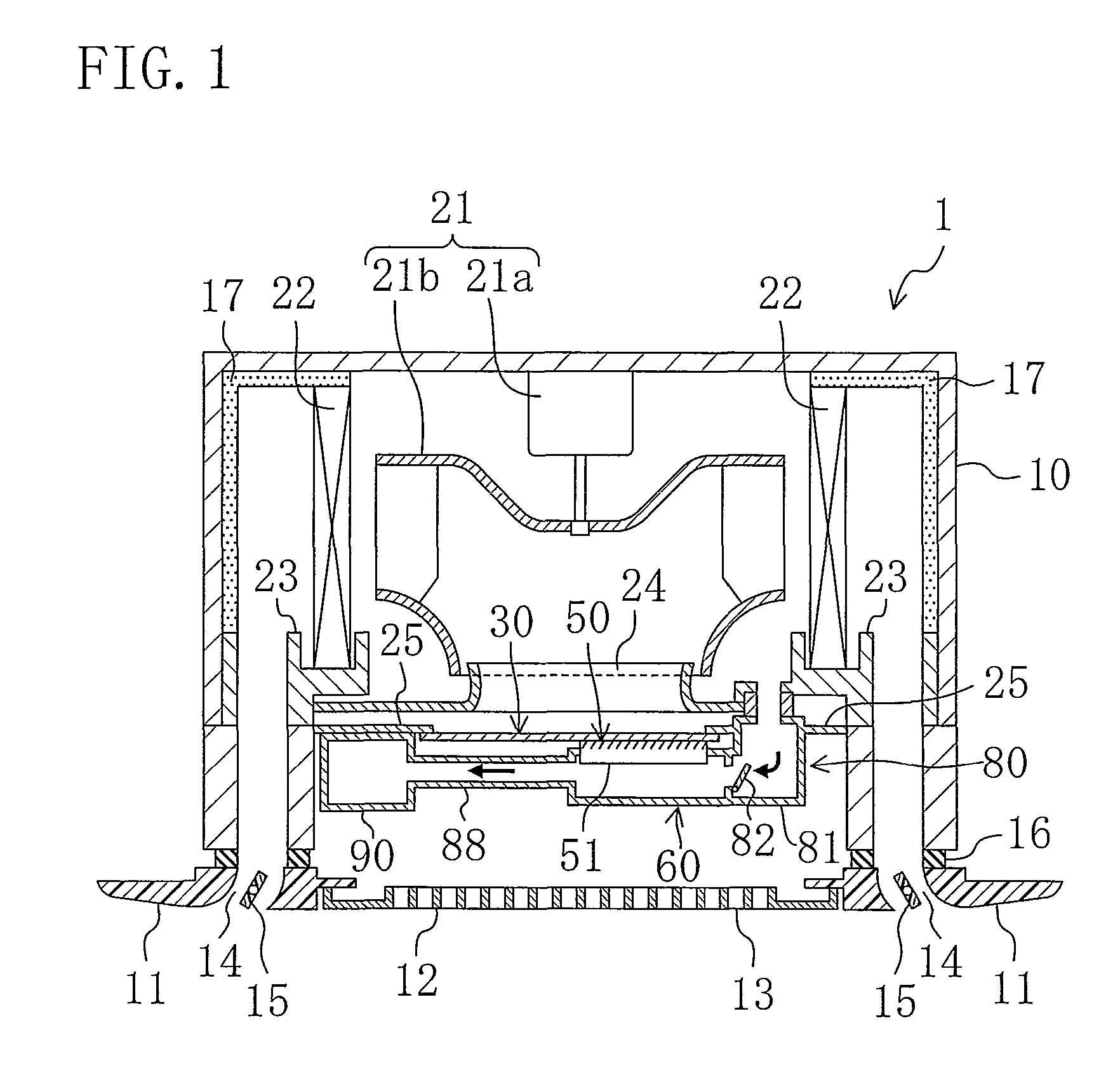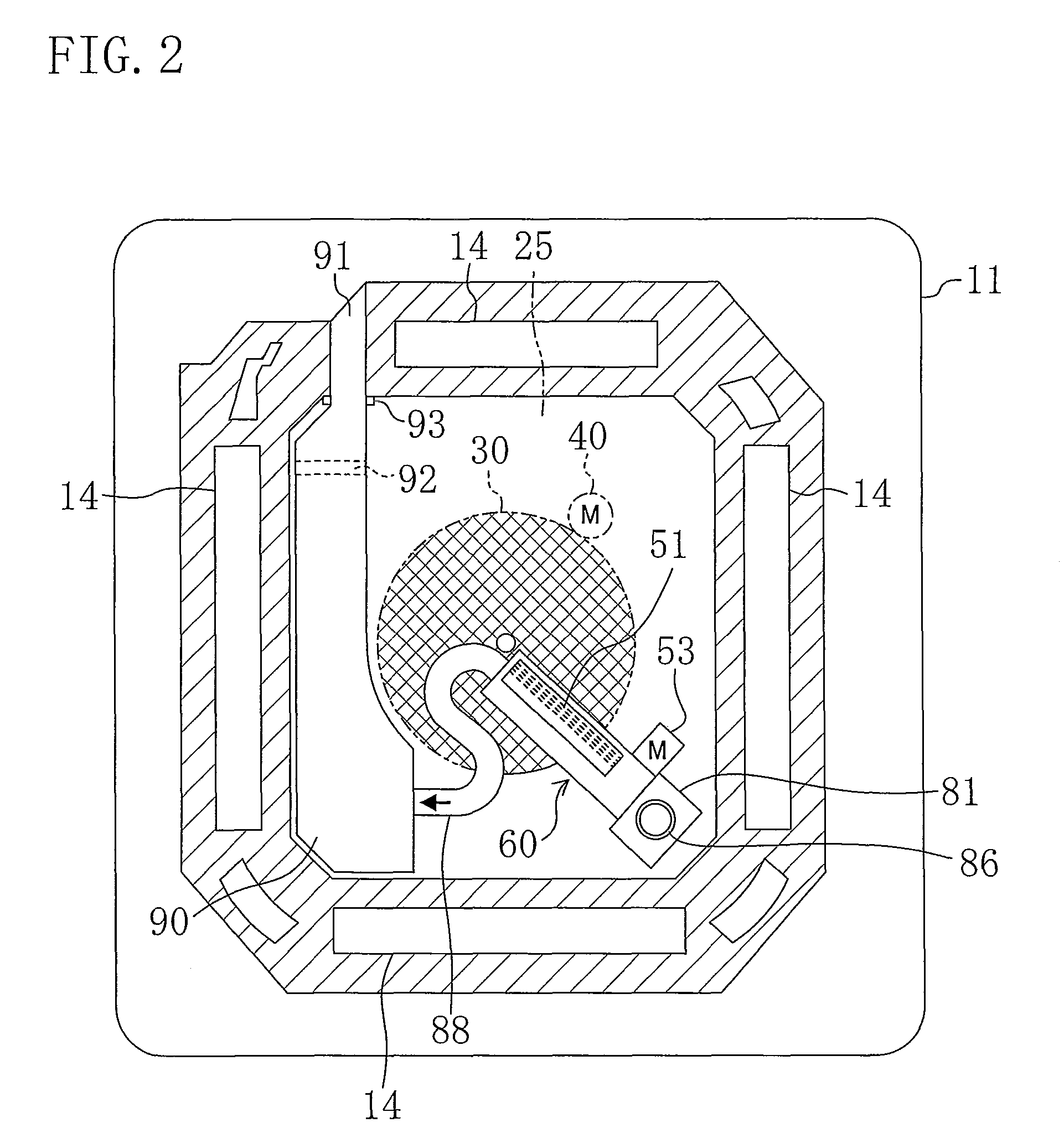Indoor unit of air conditioner
a technology for air conditioners and units, applied in the field of indoor units of air conditioners, can solve the problems of dust scraping from air filters by bristles, and achieve the effects of preventing degradation of dust removal performance, high dust removal performance, and increasing the amount of trapped dus
- Summary
- Abstract
- Description
- Claims
- Application Information
AI Technical Summary
Benefits of technology
Problems solved by technology
Method used
Image
Examples
embodiment
—Third Variation of
[0137]Then, a third variation of the embodiment will be described. Although not shown, in this variation, the rotation angle of the air filter (30) in the “dust removal operation” of the filter cleaning operation is adjusted. Specifically, in this variation, the rotation angle of the air filter (30) (i.e., a predetermined area from which dust is intermittently removed) in the “dust removal operation” is adjusted depending on the amount of dust attached to the air filter (30).
[0138]In this variation, when the amount of dust attached to the air filter (30) is large, for example, the rotation angle of the air filter (30) is reduced. That is, when the amount of dust attached to the air filter (30) is large, the amount of rotation of the air filter (30) at each time is small, and thus, a small area of the air filter (30) passes over the rotating brush (51) at each time. Consequently, the area from which dust is scraped by the rotating brush (51) at each time is small. ...
PUM
| Property | Measurement | Unit |
|---|---|---|
| area | aaaaa | aaaaa |
| rotation angle | aaaaa | aaaaa |
| shape | aaaaa | aaaaa |
Abstract
Description
Claims
Application Information
 Login to View More
Login to View More - R&D
- Intellectual Property
- Life Sciences
- Materials
- Tech Scout
- Unparalleled Data Quality
- Higher Quality Content
- 60% Fewer Hallucinations
Browse by: Latest US Patents, China's latest patents, Technical Efficacy Thesaurus, Application Domain, Technology Topic, Popular Technical Reports.
© 2025 PatSnap. All rights reserved.Legal|Privacy policy|Modern Slavery Act Transparency Statement|Sitemap|About US| Contact US: help@patsnap.com



